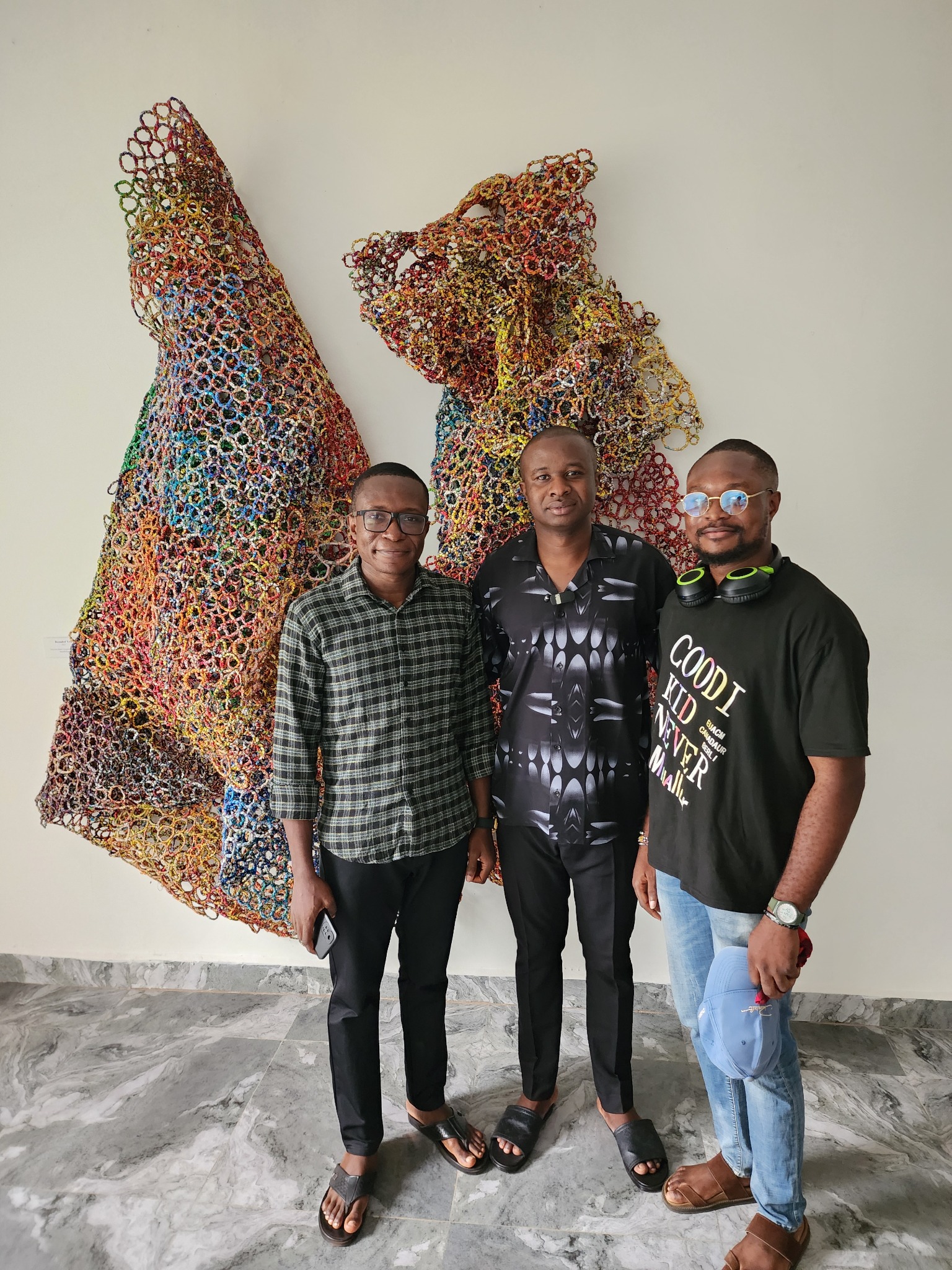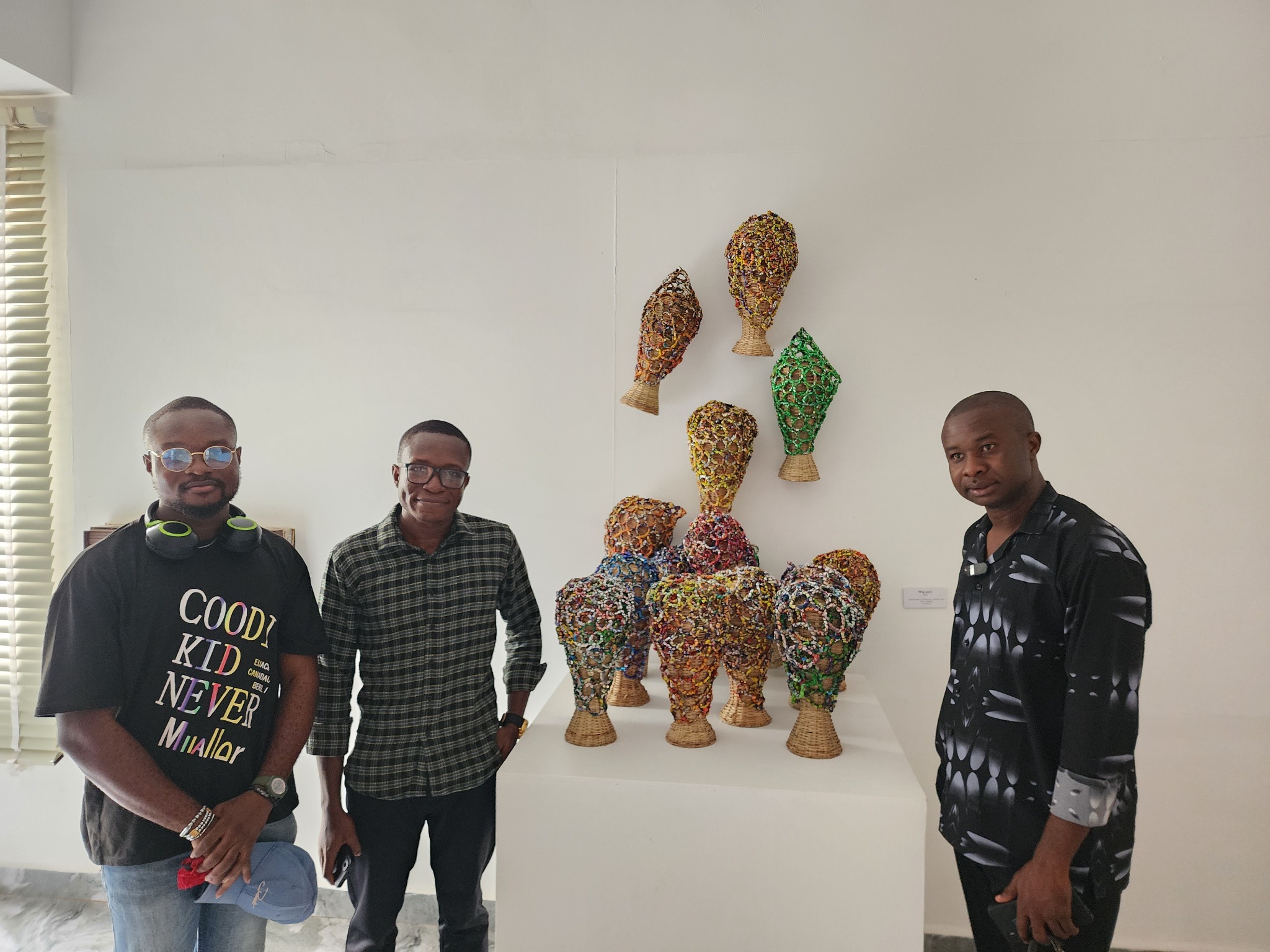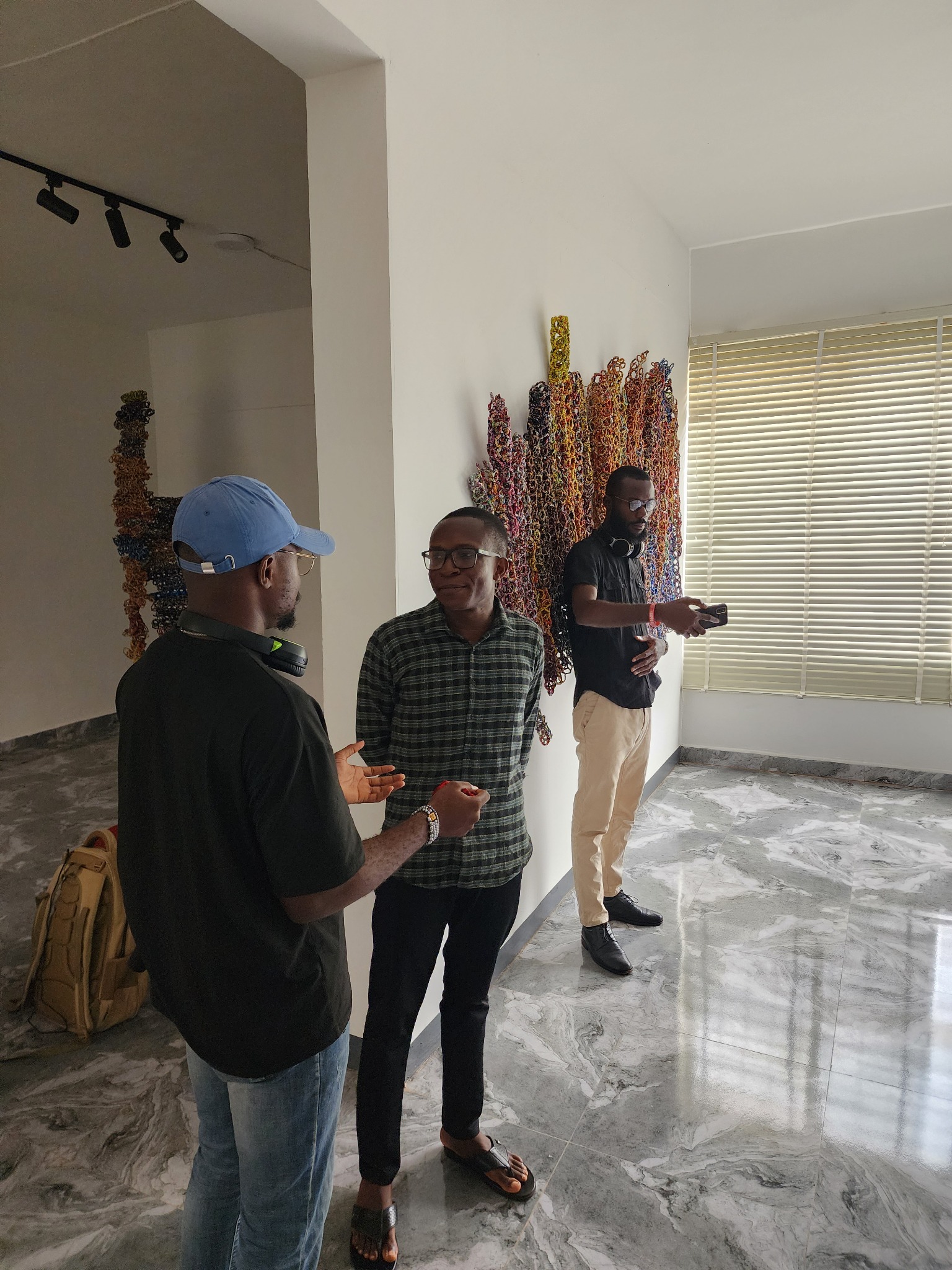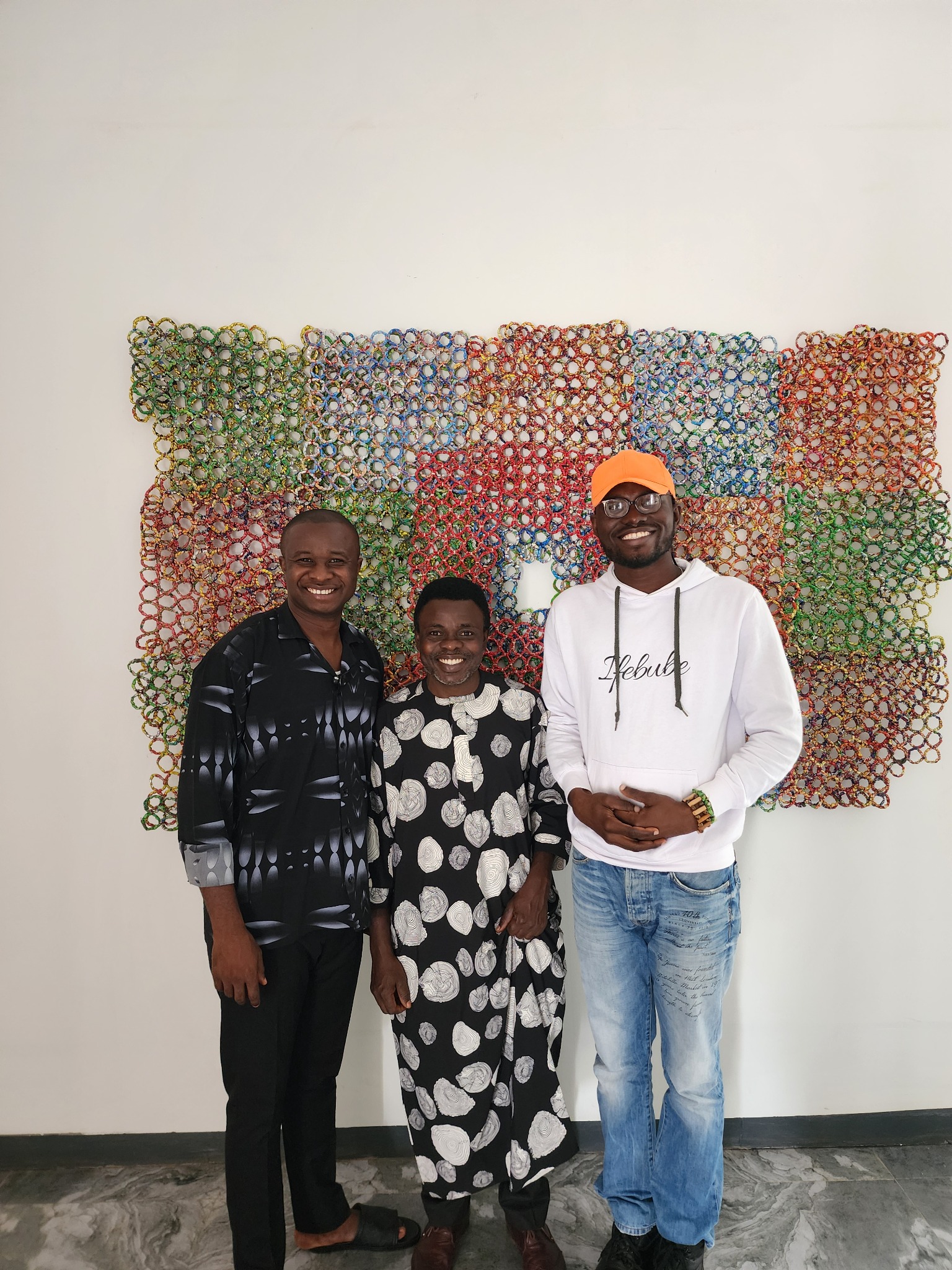
Inside the Institute of African Studies' Museum, UNN, and the Question of Art
The question of art, or rather, what art is, is a classic one in every sense. It's long-standing, monolithic, canonical, traditional and, I daresay, divisive. Too many a literary critic and intellectual has been forced into taking sides in the quest to provide a definite answer to a question each party thinks has been too overly dramatized when it is actually simple. One is either here or there, seeing through concave lenses or convex. There exists a plethora of deeply opinionated responses, essays, articles, interviews, and so on, put forth as truth toward the vindication of this question.
And then there's me, who sees absolute sense with both camps, who's there and here, and thinks, Does the question of art has to have any one answer?
What if it's beauty lies in its ambiguity? In it's ability to seamlessly waltz in and out of forms, being one thing for one person now, and being another in a different situation for someone else. For instance, a tree can be nothing but material to be cut up for planks and firewood if you're in UNN's Department of Works, salvation if you're being chased by a bear (this is a myth though, bears climb trees), or an object of genuine wonder and awe. One could choose to set up tent with those who see trees as part of nature's lavish brush stroke, and not see them as anything else. But I think it's sagacious and practical to, first and foremost, think that trees can be all of those things--the myths included.
I stepped into the Institute of African Studies' Museum in UNN today in the company of very good friends, Oga Emma and Mr. Ozioko; the latter also happened to be my lecturer and project supervisor during my undergraduate years. As an undergraduate, I'd always seen the artistic imitation of the old Igbo yam barn at the entrance to the Institute of African Studies, but it had never crossed my mind that the display could be the tip to an iceberg. Perhaps, it was owing to some sort of artistic naivety, a lack of curiosity, or it was simply just that such ideas couldn't take to the overburdened, trotting mind of an undergraduate.
All of that didn't matter today anyways. Today, I wished I'd, at least, tried to take an interest back then and suffer the risk of being rebuffed or corrected (this was also a fear). Though, in the spirit of giving honour to whom it is due, I have to admit I wouldn't have made the visit or been aware of the museum as a matter of fact if it weren't for Mr. Ozioko, who had a scheduled rendezvous with the museum's guest art curator, Ugonna Ibekwe, a tall, cool guy in casual attire with a baseball hat to match and a pair of square-shaped glasses.
Fortuitously, he was outside when we drove in, and proceeded instantly and amicably to give us a tour of the museum, or rather, its latest section.
For those of you who haven't been there, but would love to, the museum is the last door on the left once you step through the entrance of the Institute of African Studies. Pretty basic, right?
Well, the tour itself was straightforward; no large halls filled with limestone or marble busts of curly-haired men on ionic pillars, no large, framed ancient maps or historical paintings, no detours, just two rooms flanking both sides of the tiny lobby at the museum's entrance.
Visitors would have to pay a small access fee--a hundred Nigerian naira--to the receptionist at the desk as they fill in their names in the logbook. Too small a fee for the experience if you ask me, but hey, sometimes great art just says "come on to me, no strings attached". Comments about the art pieces and the experience are also welcome after the viewing session. But please, don't go and tell them to include "item 7" in their viewing experience. Anything closely related to the art on display and the experience of appreciating art is welcome.
Unfortunately, we didn't have the time to explore the section by the right, which I think must feature older items. I did get a sneak-peek though--at pieces crafted from wood. I'm sure they would've been intriguing if we'd had enough time to explore.
The left section, however, I found most interesting. It's after all the reason I decided to pen this write-up. One begins to get their very first experience of art the moment they step into the room. Items of art hang on the canvas of clean white walls, others not hangable take up seclusion across grey tiles with gentle whips of white. The space is serene. The air is cool. But I was confused.
It wasn't confusion in the sense of "what is going on here?"
It was in the sense of one unable to give form, and in extension, meaning to a piece of art. Some art is glitzy, entertaining, a mascara of pixie dust, others are more trying, thought-provoking, demanding, like a whirlpool of rabbit holes, or a woman. The latter was the kind of art I was staring at.
One thing about this kind of art is that one can quickly look over it, if they're surface riders and are the type to judge from outward looks alone. For those who like to touch the sandbeds of the deep, it can take you on a protracted philosophical and existential ride until you begin to see life's mysterious, often incomprehensible face staring right back at you, or at least, facets of it.
For most people, by people I mean those who are most inclined to the lifeblood of the criticism of art, the latter can be a more apt definition--if there ever was one--for art.
I was staring at rings of what looked like beads woven together into multi-coloured large nets on the wall, which were either smooth-surfaced, or ruffled like the face of stormy seas. It was more closely linked to sculpting than to painting, but it wasn't even a sculpture. It was crafting. But I've seen hand crafts that form an image and a clear idea--clear in the sense that almost everyone can immediately point to the heartbeat of the artist. For instance, you could look at a painting or sculpture and say "that is a woman". The form might be ugly or irregular, averse to the usual form of a woman, but you could still identify the core of imitation, which is the likeliness of womanhood.

These pieces of art seemingly had no core. There were no ties to any traditional form. It was more conceptual--manifestations of abstract ideations--than anything else. One of them was a long ascending chair made of the same material as the others. I've forgotten its title. Another section consisted of wigs crafted onto raffia head-models (Wig anyi, 2024). But what was artistic about an ascending chair or wigs?

I pictured a random person walking into that museum, seeing what I was seeing, and quite simply saying "this is useless."
Then, I remembered Prof. Akwanya, another lecturer and revered academic figure during my undergraduate years (he's retired now), and Martin Heidegger, and their verdict on art. Art is art, for itself and in itself. It cannot be said to have a use as if it were a tool or an equipment. Otherwise, art would need servicing and oiling, features that are implicit in an object of a terminable lifespan. No. True art sustains itself, and thus lives forever. What is utilitarian cannot be eternal and fades away the moment it outlives its use...
And this is true.
Whatever meaning you get from a work of art, it surrenders to you because you have surrendered yourself to it. Which is why a piece can be multifaceted in meaning, and that to different people.
But then, this is were it got interesting. On getting close to the pieces, I realized they weren't crafted from beads. The material for the mesh of colourful rings appeared to be indecipherable. But there was help in the way of little tags appended to the wall right beside each piece. The tags carried the title of the piece and the materials used to craft them.
You wouldn't believe what these art items were made of. Plastic, polyethylene, nylon (I'm trying to remember here, so I might not be accurate). Basically, all the confounding pieces in that space were crafted from sweets, biscuit, noodle wrappers. Stuff that you'd find littering the environment, causing a nuisance either as they waited to be biodegraded (which would be long after you and I have turned to dust), or burned, in which case they become carbon emissions, which are equally harmful to the atmosphere.
Do you get where this is going?
Eco-friendly art! Not just in theme, but in its very makeup and ideation. Now, I know there's lots of it popping up in recent times, especially with growing concerns about the safety of our environment. But it's the first time, I've seen it being curated and displayed in its own right as art, not as a distraction or a one-minute wonder.
My mind began to fly.
The idea was marvellous! Eco-activists would love it. Think of all the waste this would take off the street, how safe it would make our environment, and it didn't need to be burned or decomposed. No, it was made into something more, transcending the inevitable condemnation of death into the light of eternal life. I thought of my very good friend, Merit Nwachukwu, one of the most front-footed environmental activists I know and wished she was there. Maybe, she'd have crapped herself.

However, there was an incontrovertible factor implicit in these considerations. The factor of art, but not art in the light of what I've already mentioned--that's one warring side. Art in the sense held by the other side of the divide, namely the functional side, those for whom the definition of art lies in its utilitarian correlations to society.
Could we now say these art pieces, which appear meaningless on face value, is art for art's sake? Especially after learning that pieces like these might be responsible for a freshly neat corner of the school environment? The impact is fractional, minimally so if I'm being honest, but it is practical. After all small drops of water do make an ocean, don't they?
The extent of this reality--the adoption of waste to create art--is not limited to its practicality. As a matter of fact, it is fully grasped in the functionality that is inherent in its practicality. Is there anyone in the world today that wouldn't think eco-friendliness and environmental safety the moment they came across an art piece created from waste? Such an art piece simultaneously mirrors and answers a pertinent question in today's society.
Unlike the previous version of art, this version is meaningful because it is useful and mimetic of an aspect of life in our society. Do you want to know the funny thing? Both versions, both warring factions, ironically find expression in the same pieces of art up for display in the museum. It is for this reason that I think the artist himself, Sunday Ernest, is a genius.

During the session, the guest art curator mentioned something that stuck. He said, and I paraphrase, that the artist didn't know the endings for the artworks on display. The works ended themselves. That is to say that while he may have worked with a design in mind, he didn't work with an ending in mind. He allowed each artwork grip him, and take him for a ride as it found expression through him, until it was fully formed. For newbies to the artistic who might ask "Is that even possible?" Yes, it is. Artists who surrender themselves would know this.
This very statement Ugonna made was important for me because it vindicated Sunday Ernest from the accusation that he might have worked with a premeditated idea, which seems to be the judgment of people from the "art for art's sake" camp. Yet, his artworks still found a way to be functional.
Personally, no artist--in the truest sense of the word--sets out to craft an answer or response to a societal or essential human problem. The focus of intent is mimesis, precisely a mimesis of life. It is in this mimesis that the case for art's self-sufficiency or functionality can be argued.
Therefore, for the artworks in question, it is both safe to say they are art because:
They clearly exist on their own, and are self-sufficient. Completely devoid of any meaning on face value, only surrendering one or some if you are willing to pay the price of devotion.
At the same time, they have meaning because they imitate a crucial part of society, culture, and life.
You might like milk. I might love chocolate. But you can't take away the existence of chocolate milk.
Maybe art isn't just art for itself or art for its functionality. Art is art because it can be both.
P.S: Please, visit the Institute of African Studies' Museum when you can.
0 Comments Add a Comment?